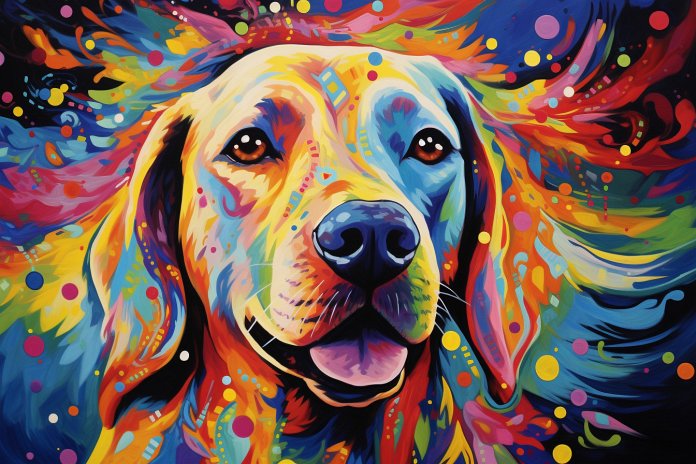
Dogs have a limited ability to perceive color. They only have two color receptors in their eyes, while humans have three. This means that dogs see the world in a more limited color range, similar to humans with red-green color blindness. However, dogs have an exceptional sense of smell, with a larger part of their brain dedicated to analyzing odors compared to humans. Dogs rely heavily on their sense of smell to understand the world around them. This suggests that dogs may be able to “smell” color in their own way, using their noses to interpret what they see.
Signs Dogs Can Smell Color
It is possible that dogs, like some people, have synesthesia, which is the ability to connect different senses. When dogs sense something, they may wag their tails, tilt their heads, become more alert, or stare intently to figure out what it is.
Body Language
If you suspect your dog is smelling color, look for signs such as staring, alertness, head tilting, tail wagging, and sniffing.
Other Signs
Other cues to watch for include responding differently to certain colors and turning away after sniffing.
History Behind Dogs Smelling Color
Research conducted in the 1980s confirmed that dogs can distinguish between some colors but not others. Dogs can see shades of grey, but not the full spectrum of colors. Dogs see colors differently from humans, perceiving violet as blue. They also match colors with no more than two spectral lights. This limited color vision is beneficial for dogs in dim light.
Science Behind Dogs Smelling Color
The structure of a dog’s nose allows for efficient scent detection. Dogs have a much greater sense of smell compared to humans, with some breeds, like Bloodhounds, being able to smell millions of times more than humans. Dogs can react to colors based on their perception and may associate the shades of a scent with its taste.
Training a Dog to Smell Color
To train a dog to use their sense of smell to “smell” colors, association training is used. This involves associating a particular scent with a specific color. Training sessions should be short and fun, with rewards given immediately after the desired action is completed. Rewards can be toys, food, or praise.
“Dogs may see the world in limited colors, but they can smell color in their own unique way.”

Tips & Things to Know
1️⃣ Dogs have limited color perception: Dogs only have two color receptors in their eyes compared to humans who have three. This means that dogs see the world in a more limited range of colors, similar to humans with red-green color-blindness.
2️⃣ Dogs have an exceptional sense of smell: Dogs have many more sensory receptors in their nasal cavity compared to humans, and the part of their brain used to analyze odors is much larger. This makes their sense of smell special and extremely efficient.
3️⃣ Dogs can associate scents with colors: It is believed that dogs can associate scents with colors, just like humans can associate smells with tastes. By training dogs using association, specific scents can be linked to certain colors, allowing dogs to use their sense of smell to “smell” colors.
Frequently Asked Questions, Answered ✅
1. What is the difference between a dog’s color perception and a human’s color perception?
– Dogs have two color receptors in their eyes, while humans have three, making a dog’s color perception more limited compared to humans.
2. Can dogs smell colors?
– While not proven, it is believed that dogs can associate scents with colors and use their sense of smell to interpret what they see.
3. What are some signs that indicate a dog might be smelling color?
– Signs include staring, being alert, head tilting, wagging tail, and sniffing.
4. How do dogs perceive colors differently from humans?
– Dogs see colors differently from humans, with a rainbow appearing as dark grey, dark yellow, grey, light blue, and dark blue to them. Dogs also see violet as blue.
5. How can you train a dog to smell colors?
– Training a dog to smell colors involves associating a particular scent with a specific color, so the dog learns to recognize the connection between the two. Training should be short, fun, and include rewards such as toys, food, or praise.